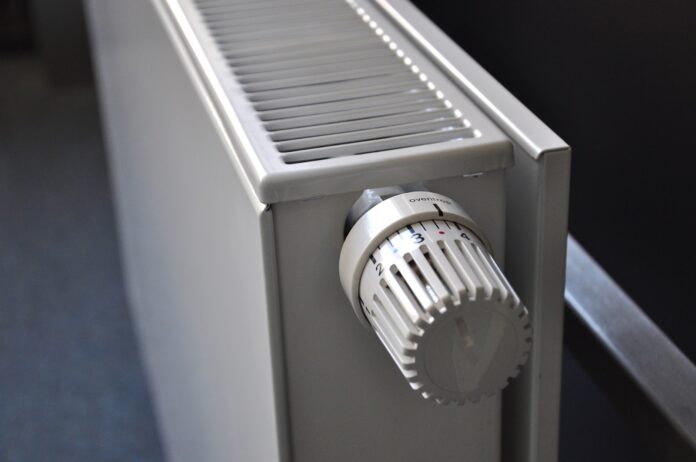Experts reveal what to do if your radiator is hot at the top and cold at the bottom
With the colder weather on the horizon and the continuing cost of living crisis, experts have shared a few tips on how to fix a cold radiator.
The boiler experts at Boiler Central have explained why radiators might be cold at the bottom and how to fix this common problem
Radiators have a job of keeping the house warm, so when a radiator is cold at the bottom, it is not functioning properly which could lead to more complicated issues.
If a radiator has cold patches while the heating is on, it could mean that there is sludge present inside the radiator.
Sludge tends to accumulate inside the radiator over time. Once enough sludge is in the radiator, it blocks the flow channels, meaning water is unable to move around the radiator effectively.
This is a very common issue and there are simple steps to clean a radiator and prevent sludge build-up.
Here are Boiler Central’s simple steps to cleaning your radiator to get rid of the cold spot at the bottom
Isolate the radiator
If the affected radiator has a thermostatic radiator valve, turn this down to 0. On the other side of the radiator is a valve known as the lockshield valve (covered with a plastic hood).
Close the lockshield valve using a spanner – this may be either a quarter or half a turn but take note of this, as it will be how much it needs turning to open it back up again. Wait at least an hour for the water in the radiator to fully cool.
Set up for leaking water
Have some containers or buckets on hand to ensure that you catch all the water that escapes from the radiator without overflow or spillage. Place an old rag under each vale to ensure any unexpected leaks don’t ruin the flooring.
Open the bleeding valve
Open the bleed valve right at the top of the affected radiator using a bleed key or a screwdriver. Water will then begin pouring out from the loosened nuts.
Removing and cleaning the radiator
When the water stops coming out of the radiator, disconnect the valves and take the radiator off its bracket. Ensure not to completely undo the valves. Doing this could cause the contents of your heating system to empty.
Take the radiator outside to clean. Attach a hose to one end of the radiator and blast water through the end for a couple of minutes until the water begins to flow clean. To ensure that the radiator is completely clean, connect the hose to several different openings.
Test out the system
Once done, place the radiator on its bracket. Ensure the pipes are attached to the nuts while turning the valves in either end to their original positions.
Water will begin refilling the radiator, so you must have the bleed key on hand. Close the bleed valve when water starts to escape from it.
Once this is done, turn the heating back on and wait for around thirty minutes. If done properly there should be no cold patches present on the radiator.
Re-pressurise
Once a radiator is removed from a sealed heating system, it must be re-pressurised. If the heating system is pressurised, add more water to the loop to level out the pressure.
A spokesperson for Boiler Central said: “Unfortunately radiator sludge is a very common occurrence and this is because of the reaction caused when water interacts with metal.
“When this happens the best thing you can do is clean the radiator completely, which can sound like a daunting task but it is something you can do without a professional.
“We’re hoping that our cleaning tips will provide some help in running a more efficient household, especially during these tough economic times.
“Saying this, if you’re still unsure it is always best to call a professional plumber before a heating problem gets too bad.”
Boiler Central solves the biggest problem in the boiler industry which is finding an accurate price. It gives customers fixed prices on new boilers, making the purchasing process transparent, and fair.
Source: boilercentral.com.
Help keep news FREE for our readers
Supporting your local community newspaper/online news outlet is crucial now more than ever. If you believe in independent journalism, then consider making a valuable contribution by making a one-time or monthly donation. We operate in rural areas where providing unbiased news can be challenging. Read More About Supporting The West Wales Chronicle


























